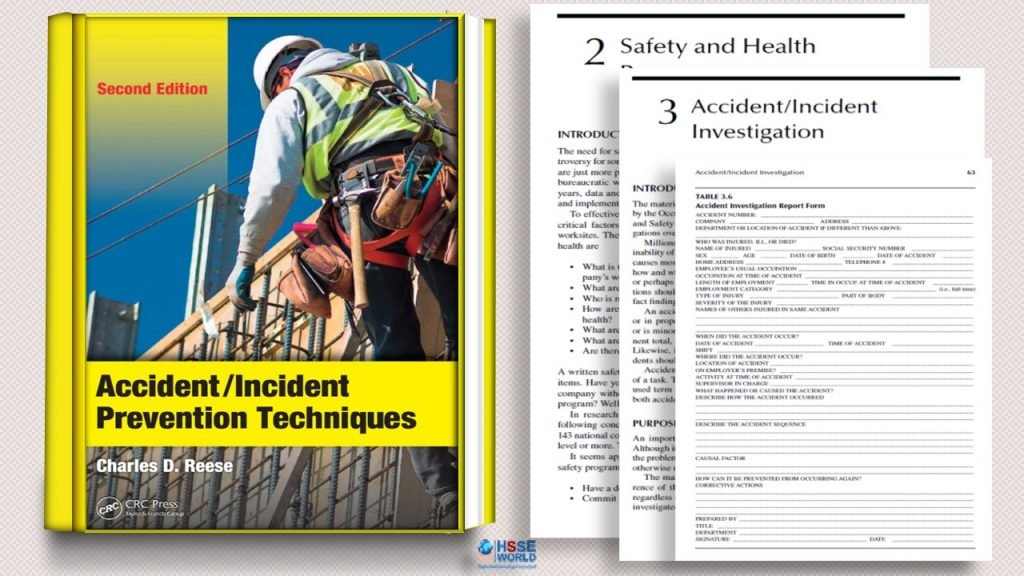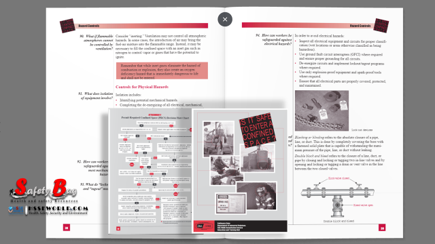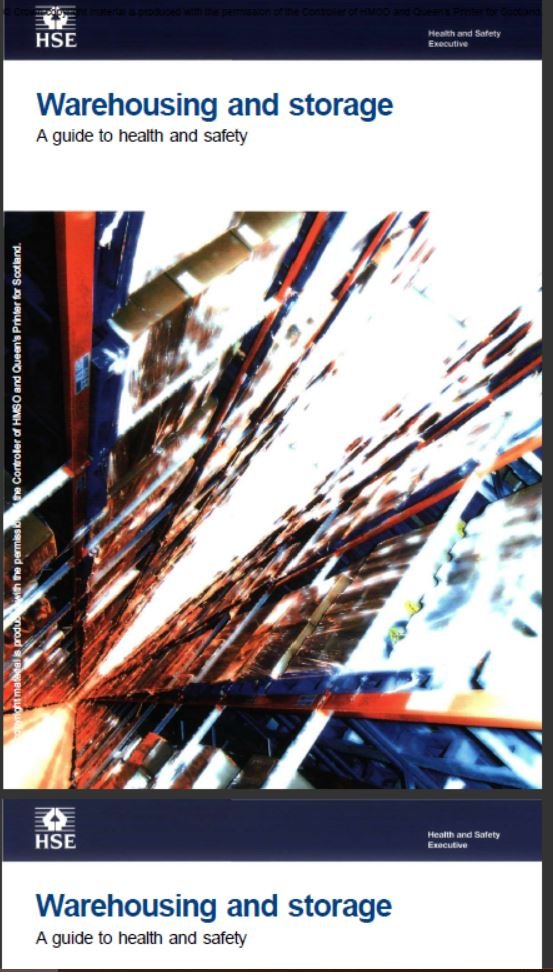Accident Incident Prevention Techniques Second Edition by Charles D. Reese. The 2nd edition of Accident/Incident Prevention Techniques provided clear, comprehensive guidance on how to mitigate the cost, in personnel, and to the bottom line, of accidents/incidents in the workplace. The objectives of the book are to Reduce death from work-related injuries, Reduce nonfatal work-related injuries, Reduce work-related assaults, and to Reduce work-related homicides. Topics such as safety culture and behavior-based safety are included in this new edition. The author draws on his more than 30 years of experience to supply a template for the development of an effective safety and health program.
Accident/Incident Prevention Techniques, Second Edition is based on the premise that all types of businesses and industries must face the reality that accidents and incidents that result in occupational injuries and illnesses will in most cases transpire at their business or facility. The results of these events have economic, legal, and human impacts on the company’s bottom line. In most situations, the impact is usually negative.
With this said, anything that a corporation or company can do to prevent these events will in most instances result in positive outcomes for that company.
The causes of occupationally related accidents or incidents are most often the result of some form of energy or agent being released. Seldom is there one single cause for accidents and incidents? There are many contributing factors that combine to become the root causes of occupational accidents and incidents.
Because employers and safety and health professionals are faced with multiple causal factors for these occupational happenings, they must utilize multiple approaches to prevent the occurrence of accidents and incidents. These range from prevention program development, to behavioral approaches, acceptable best prevention techniques, sophisticated analysis methods, engineering controls, and personal protection for the workers.

The approach taken by employers and safety and health professionals will include a combination of prevention approaches that best meets the needs of their unique industry or business. The approach used will be tailored to meet their needs. Thus, Accident/Incident Prevention Techniques provides a plethora of techniques and tools needed to structure a prevention approach to meet the needs of corporations and companies. These techniques are those that have been found to work in the past, as well as an intermingling of the best theoretical methods. It is laced with practical examples and tools to help those responsible for occupational safety and health develop the best prevention initiative for them and their workforce.
This book is a single-source guide of techniques and approaches to prevent the occurrence of occupational injuries and illnesses.

Why Injury PreventIon?
There are very real advantages for those trying to address injury prevention, advantages that do not exist when trying to address illnesses prevention; these include
- Injuries occur in real-time with no latency period (an immediate sequence of events).
- Accident or incident outcomes are readily observable (must only reconstruct a few minutes or hours).
- Root or basic causes are more clearly identified.
- It is easy to detect cause-and-effect relationships.
- Injuries are not difficult to diagnose.
- Injuries are highly preventable.
AccIdents or IncIdents
The debate over the use of the term “accidents” versus “incidents” has been a long and continuing one. Although these terms are used as virtually interchangeable in the context of this book, you should be aware of the distinction between the two. Accidents are usually defined as unexpected, unplanned, and uncontrollable events or mishaps. These undesired events result in personal injury, or property damage, or equipment failure, or some combination thereof. An incident is all of the previous as well as adverse production effects. Accidents are a subset of incidents (see Figure 1.1). This definition of an accident undermines the basic philosophy of this book, that we can control these types of events or mishaps. This is why we spend time identity hazards and determining risks with the probability that a hazard will result in an accident with definable consequences. Thus, striving for a safe workplace, where the associated risks are judged to be acceptable, is a goal of safety. This will result in freedom from circumstances that can cause injury or death to workers, and damage to or loss of equipment or property. This is essentially a definition of safety. The approach to this is that we can control factors that are the causative agents of accidents. We can prevent accidents by using the tools provided within these pages.
Contents
The Contents of Accident Incident Prevention Techniques
- Introduction
- Safety and Health Programs
- Safety and Health Programs
- Accident/Incident Investigation
- Hazard Recognition and Avoidance
- Accountability and Responsibility
- Motivating Safety and Health
- Accident/Incident Analysis
- Root Cause Analysis
- Causal Factor Analysis
- Introduction to Health and Safety in construction,2nd Ed
- Barrier Analysis
- Job Safety/Hazard Analysis
- Safe Operating Procedures (SOPs)
- Job Safety Observation
- Safety and Health Audits
- Fleet Safety Program
- Dictionary of Occupational and Environmental Safety and Health
- Preventive Maintenance Programs
- Safety and Health Training.
Download the book
shoping
More Downloads
- E-Books: Healthcare Hazard Control & Safety Management
- E-Books: Safety, Health and Working Conditions Training Manual
- E-Books: Energy Efficiency in Water and Wastewater Facilities
- E-Books: Fire Service Features of Buildings and Fire Protection Systems
- E-Books: Evaluation of Fire Safety free download
- E-Books: PPE for Chemical, Biological, and Radiological Hazards free
- E-Books: Changing the Workplace Safety Culture free download
- E-Books: Site Emergency Planning Workbook
- E-Books: Load Restraint Guide
- E-Books: Essential Practices for Creating, Strengthening, and Sustaining Process Safety Culture
- E-Books: System Safety Engineering and Risk Assessment
- E-Books: Permit-Required Confined Spaces
- E-Books: Is it Safe to Enter Confined Space?
- E-Books: 5-Minute Workplace Safety Talks
- E-Books: Safety Culture and High-Risk Environments
- E-Books: Practical Guide to Industrial Safety
- E-Books: Slip, Trip, and Fall Prevention for Healthcare Workers
- E-Books: Health and Safety at Work Key Terms
- E-Books: Fundamentals of Process Safety Engineering
- E-Books: Gas Detection Hand Book
- E-Books: Occupational health and safety management systems ANSI-AIHA-z10-2012
- E-Books: Hot Work on Drums and Tanks
- E-Books: Human Fatigue Risk Management
- E-Books: Guidelines for the provision of facilities and general safety in the construction industry
- E-Books: Handbook of Training in Mine Rescue and Recovery Operations ( 2021)
- E-Books: Code of Practice for the Safe Use of Lifting Equipment – Edition 9 (Nov 2019)
- E-Books: Free Forklift Health and Safety Best Practices Guideline
- E-Books: Handbook of Hazardous Chemical Properties
- E-Books: Human Performance Improvement through Human Error Prevention
- E-Books: Principles Of Fire Risk Assessment In Buildings
- E-Books: Investigation of Occupational Accidents and Diseases
- E-Books: Radiation Protection and Safety in Industrial Radiography
- E-Books: Basic Guide to System Safety, Third Edition
- E-Books: Food Safety Management-A Practical Guide for the Food Industry
- E-Books: Safety identification: Escape and evacuation plan signs- ISO 23601
- E-Books: Safety at Work
- E-Books: The Safety-Critical Systems Handbook 4th edition
- E-Books: Fundamental principles of occupational health and safety
- E-Books: Fire Safety Risk assessment Guide – Sleeping Accommodation
- E-Books: Mental health at work series
- E-Books: Live Fire Training: Principles and Practice
- E-Books: Pre-Startup Safety Review Guide
- E-Books: Fire and Emergency Drill Manual and Building Inspection Guide
- E-Books: Health and Safety: Risk Management 5th edition
- E-Books: Fire Protection systems -Third edition 2021
- E-Books: Fire Safety Logbook templates
- E-Books: From Accidents to Zero
- E-Books: Electric Safety Practice and Standards
- Your steps to chemical safety
- E-Books: Ergonomics and Psychology Developments in Theory and Practice
- E-Books: HAZOPS Should BE fun-The Stream-Based HAZOP
- E-Books: Safety Health and Environmental Auditing
- E-Books: A Quick Guide to Health and Safety
- E-Books: Occupational Ergonomics A Practical Approach
- E-Books: Job Hazard Analysis A Guide for Voluntary Compliance and Beyond
- E-Books: Electrical Safety of Low Voltage Systems




